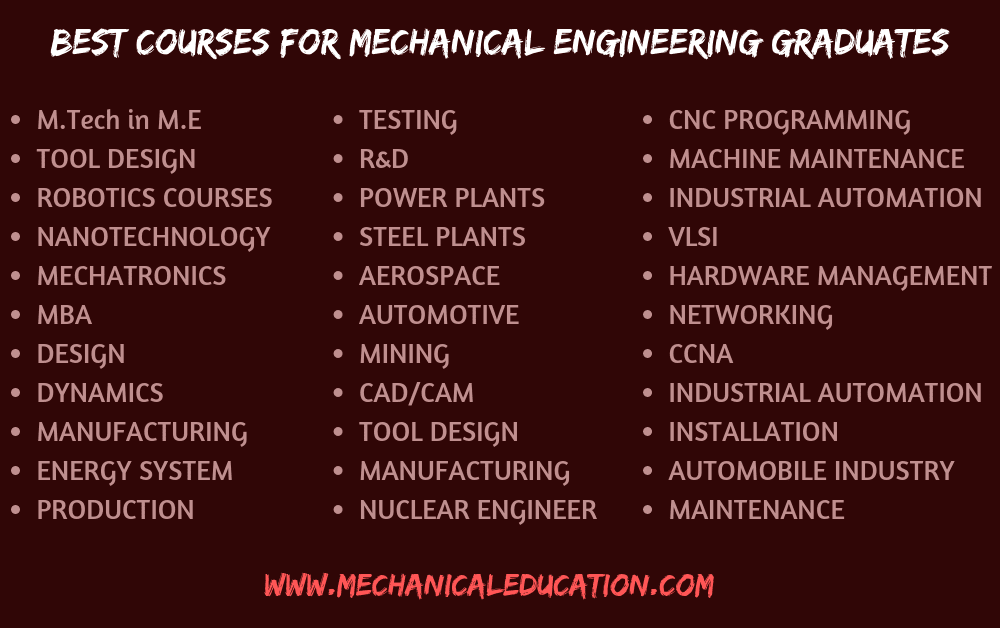My Unforgettable Journey: Diving Deep into a Mechanical Engineering Course
Remember that feeling when you look at a complex machine – a car engine, an airplane, even a simple toaster – and wonder, "How on earth does that actually work?" That gnawing curiosity, that desire to peel back the layers and understand the gears, the circuits, the forces at play? That’s exactly what led me to choose a Mechanical Engineering course.
I wasn’t sure what to expect. Visions of lab coats and intricate blueprints danced in my head. There was a mix of excitement and a tiny bit of dread, wondering if I was smart enough. But let me tell you, it was one of the most rewarding adventures I’ve ever undertaken.
The Foundation – Building Blocks of Brilliance
The first few semesters felt a bit like learning a new language, or perhaps, learning the alphabet before you can write a novel. We started with the absolute essentials: mathematics and physics. And I’m not talking about the simple stuff you did in high school. This was the deep end. Calculus, differential equations, linear algebra – these became our daily bread. Trust me, it sounds intimidating, but they are the foundational bricks upon which everything else in mechanical engineering is built.
Physics was equally crucial. We explored mechanics, thermodynamics, electromagnetism. It wasn’t just abstract numbers anymore; it was about understanding why things move, how energy transforms, and what makes a material behave the way it does. This phase, while challenging, was vital. It taught me to think critically and analytically, a skill I now use almost every day.
The Core – Where Machines Come Alive
Once the foundation was solid, that’s when the real magic began. The mechanical engineering course started to introduce us to its core disciplines, each opening up a fascinating new world.
-
Thermodynamics: This was utterly captivating. We learned about heat, energy, and work. How does a refrigerator cool? How does a power plant generate electricity? What makes a car engine run? Thermodynamics gave us the answers. It’s about efficiency, energy transfer, and making things work optimally without wasting precious resources. It’s truly the science of energy.
-
Fluid Mechanics: Ever wondered how an airplane stays aloft or how water flows through pipes without stopping? That’s fluid mechanics. We studied the behavior of liquids and gases – how they flow, the forces they exert, and how to design systems to control them. It was mind-bending but incredibly practical, from designing pumps to understanding weather patterns.
-
Solid Mechanics (and Strength of Materials): This is where you learn why things don’t just break! We delved into how materials react to forces, stress, and strain. How much load can a bridge support? What kind of material should a car chassis be made of to withstand impact? This area taught us to design structures and components that are safe, durable, and efficient. It was all about understanding the integrity of materials.
-
Materials Science: Speaking of materials, this subject was about choosing the right stuff for the job. Metals, plastics, ceramics, composites – each has unique properties. We learned why steel is used in skyscrapers, why aluminum is favored in aircraft, and why certain polymers are perfect for medical devices. It’s a deep dive into the microscopic world to understand macroscopic behavior.
-
Design and Manufacturing: This, for me, was where all the pieces started to click. We learned how to design components and systems, often using powerful computer-aided design (CAD) software. Seeing a 3D model of a complex part come to life on screen, knowing you designed it, was a thrill. Then came manufacturing – understanding how these designs are actually made, whether through machining, casting, 3D printing, or assembly. This is where innovation truly takes physical form.
Beyond the Books – Hands-On Learning
A Mechanical Engineering course isn’t just about theory; it’s intensely practical. Our labs were where theory met reality. We’d build simple machines, test the strength of materials until they snapped (safely, of course!), calibrate sensors, and even disassemble and reassemble engines.
Projects were the highlight. From designing a robotic arm that could pick up objects to optimizing the aerodynamics of a miniature car, these tasks pushed us to apply everything we had learned. There were countless late nights, frustrating moments when something just wouldn’t work, but the satisfaction of seeing a prototype function, or a complex problem solved, was absolutely priceless. That’s when theory truly clicked, and I understood the real-world impact of our studies.
The Grind and the Glimmer – Challenges & Triumphs
Let’s be honest: a mechanical engineering degree is demanding. There were times I felt overwhelmed by the sheer volume of information, the complexity of the problems, and the endless equations. Sleepless nights fueled by coffee became a rite of passage. There were moments of doubt, wondering if I had made the right choice.
But then, there would be that "aha!" moment. A concept that seemed impossible would suddenly make sense. A design challenge that had me stumped would find its solution. The camaraderie with classmates, all facing the same struggles, was incredibly supportive. We learned to rely on each other, to explain concepts in simple terms, and to celebrate every small victory. These challenges, I realized, weren’t there to break us, but to forge us into resilient problem-solvers.
The Grand Finale – What I Gained
Emerging from my Mechanical Engineering course, I wasn’t just armed with a degree; I was transformed. I had developed a robust set of skills:
- Problem-Solving: The ability to break down complex issues into manageable parts and find creative solutions.
- Critical Thinking: Analyzing situations, evaluating data, and making informed decisions.
- Design and Innovation: Turning abstract ideas into tangible, working products.
- Analytical Skills: Understanding the underlying principles of how things function.
- Teamwork and Communication: Collaborating on projects and explaining technical concepts clearly.
More than that, I gained a deep appreciation for the engineered world around us. Every bridge, every vehicle, every piece of technology suddenly told a story of design, analysis, and tireless effort.
Looking Ahead – A World of Possibilities
The beauty of a mechanical engineering degree is its incredible versatility. The skills you learn are applicable across almost every industry imaginable. From aerospace and automotive to robotics, energy, manufacturing, medical devices, and even entertainment – mechanical engineers are everywhere. You could be designing the next generation of spacecraft, developing sustainable energy solutions, creating advanced prosthetics, or optimizing factory production lines. The possibilities truly are endless.
My Advice to You
If you’re reading this and feeling that same spark of curiosity, that desire to understand and build, then seriously consider a Mechanical Engineering course. It’s not always easy, but it is profoundly rewarding. You’ll learn to think differently, to solve problems creatively, and to contribute to shaping the world around you.
It’s a journey that will challenge you, push your limits, and ultimately, equip you with the knowledge and skills to innovate and make a real impact. So, if you’re ready to explore the fascinating world of motion, energy, and design, then welcome aboard. Your adventure in mechanical engineering is just beginning.



